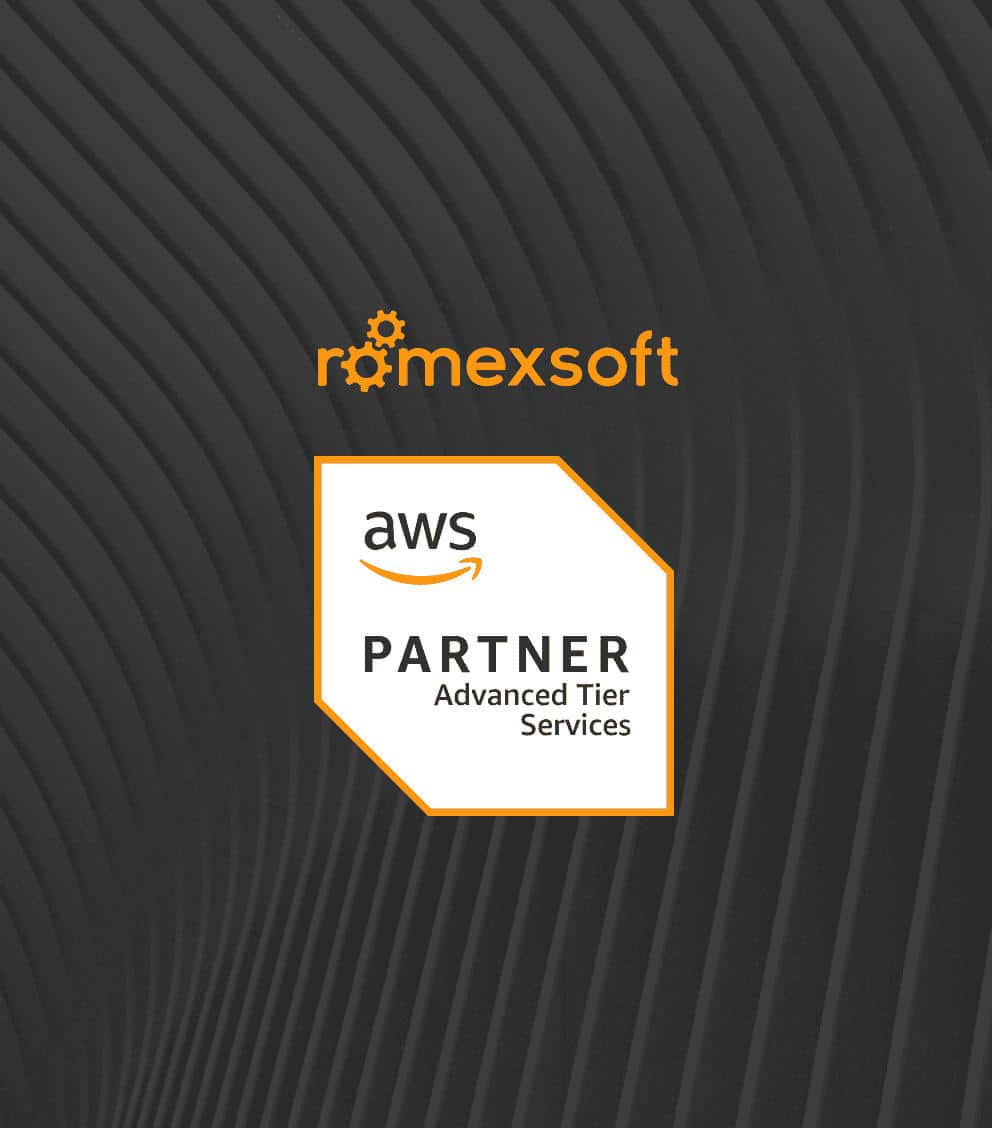Electronic Health Record Systems: Types and Which One to Choose
On-premises, Application Service Provider (ASP), Software as a Service (SaaS), and cloud-based services are the four main categories of Electronic Health Record (EHR) systems that are examined in this article. Their respective features, benefits, and potential drawbacks are highlighted to serve as a guide for healthcare organizations to select the EHR system that would be the best fit for their operational needs and objectives.
The blog discusses:
- definition of EHR system
- the difference between EHR and EMR
- types of health record systems
- a guide on how to implement the EHR software
- challenges of implementation

Table of Contents
Electronic Health Record (EHR) is a commonly known name for systematized collections of stored patient and population health information in a digital format. In other words, an EHR is an electronic version of a patient’s medical history that is maintained by the provider over time. What this record could include is a wide range of administrative and individual clinical data, namely demographics, medical history, medication and allergies, immunization status, laboratory test results, radiology images, vital signs, personal statistics like age and weight, and billing information.
Table of Contents
EHR vs. EMR: What is the Difference
While the terms EHR (Electronic Health Record) and EMR (Electronic Medical Record) are both related to digitized patient medical information for healthcare, and therefore often confused, there are several points of contrast, which are highlighted further on.
Similarities Between EHR and EMR
- Digital charts over paper records.
EHR and EMR offer digitized patient records instead of traditional paper-based charts, which makes healthcare documentation more efficient and accessible. - Comprehensive patient data storage.
Both types of systems contain volumes of data that include medical history, diagnoses, lab results, medications, and treatment records. - Provider documentation requirement.
Because these systems are essential for healthcare providers, they allow for documentation of patient engagement and encounters, management of records, and support for clinical decision-making. - Record clarity.
EHR and EMR provide legible, accurate, and readily available medical records for improved patient care and overall healthcare.
Key Differences Between EHR and EMR
Scope and Longevity
An Electronic Health Record system functions as a long-term storage of a patient’s health status. As it gathers data from multiple healthcare settings and operates for extended, uninterrupted periods of time, various providers are allowed to access and share patient information beyond a single medical practice.
An Electronic Medical Record, on the other hand, is a more localized system that gathers data within a specific healthcare environment over a limited amount of time. This type of system contains patient medical and treatment within a single medical practice, which makes it a digital version of paper charts. In perspective, Electronic Medical Record can serve as a single data source for an EHR, but it does not automatically facilitate external information exchange.
Interoperability
By design, Electronic Health Record systems allow seamless data exchange between different healthcare providers, hospitals, and labs. This interoperability enables access to the patient information in a variety of settings, which aids in decision-making as well as coordination.
Unlike EHRs, Electronic Medical Record systems are not created for easy data sharing with external systems, even though a number of modern Electronic Medical Records now support limited interoperability features. The usage of Electronic Medical Records is usually confined within a single provider’s system.
Evolution of the Terms
The terms Electronic Medical Record and Electronic Health Record systems originated from different stages of healthcare digitization. While the former emerged during the early focus on digitizing records within individual medical practices, EHR became relevant as the term that represents a broader, interoperable solution when the healthcare industry shifted towards comprehensive, connected patient data systems. Even though these terms are distinct in their origin, they may still be frequently confused.
Types of Electronic Health Record Systems
Healthcare organizations have access to a variety of Electronic Health Record (EHR) system types, each designed to meet specific operational requirements. Identifying the ideal fit can be a nuanced process. Fortunately, the expertise offered by a dedicated healthcare development services vendor can help make this choice and ensure that you select an Electronic Health Record system that aligns with your needs.
Locally Hosted
What a locally hosted or on-premise EHR represents is a system that stores all patient data and software on servers within the healthcare organization’s premises. Although this setup, in contrast to cloud-based solutions, demands direct management of hardware, software, security, and IT support, it offers full control over infrastructure, which many find especially convenient.
Benefits of locally hosted Electronic Health Record (EHR) systems
- Complete data control and security.
All the data remain under the organization’s full ownership, which results in compliance with internal governance policies and security standards, and minimizes the risk of third-party access. - Offline functionality and reliability.
The system is suitable for environments that lack stable network access, as it remains functional without a continuous internet connection. - Direct support and maintenance.
EHR infrastructure support is managed by in-house IT staff or contracted vendors, which, compared to third-party cloud providers, leads to faster issue resolution.
Key considerations when choosing a locally hosted EHR system
When choosing a locally hosted Electronic Health Record system, you must consider several important factors, such as:
- Infrastructure and maintenance responsibility.
In the perfect-case scenario, the organization not only handles expenses, configuration, and maintenance of all hardware and software, but also provides ongoing IT support for system updates, security, and disaster recovery. - Costs and resource demands.
Even though a locally hosted Electronic Health Record system doesn’t require subscription fees like cloud environments do, resources required for servers, software, and ongoing maintenance can be substantial. - Backup and continuity risks.
On-premise storage frequently lacks reserve data copies, unlike cloud-based solutions, and demands reliable, robust backup strategies. For this reason, vendor contracts must clearly establish data ownership to avoid access issues in disputes or terminations. - Long-term viability and compatibility.
Upgrades are to be planned in advance to ensure compatibility with evolving healthcare technologies and prevent obsolescence.
Cloud-based EHR
A cloud-based Electronic Health Record system is essentially a storage for patient data and software located on third-party vendor servers that could be accessed via the internet through a SaaS model. What sets it apart from on-premise systems is the lack of need for local installation and maintenance, as the vendor manages infrastructure, security, backups, and software updates.
Benefits of Cloud-Based EHR Systems
The following are the main advantages of selecting a cloud-based EHR system:
- Remote accessibility and multi-device support.
Access to patient records is granted to any authorized users from any internet-connected device. This feature enhances flexibility and workflow efficiency. - Cost efficiency and reduced IT burden.
Because there is no need for on-site servers, initial expenses are reduced significantly. Plus, with the vendor’s handling of infrastructure, security, and software updates, IT maintenance responsibilities are minimized. - Automated backup and disaster recovery.
Cloud vendors provide robust data protection and backups, a feature that is highly convenient when there is a risk of data loss caused by local failures or disasters.
Key Considerations When Choosing a Cloud-Based EHR System
Despite the numerous advantages of cloud-based EHRs, there are several important factors to keep in mind when opting in their favor:
- Internet dependency and reliability.
A stable connection is required for system access; otherwise, operations might be disrupted. - Data security and compliance.
Despite the security measures ensured by vendors, organizations must verify regulatory compliance (e.g., HIPAA) and estimate potential cloud security risks. - Limited direct data control and vendor lock-in.
Because data is stored on vendor servers, ownership, access, portability, and compliance must be clearly established through contractual agreements. For that reason, switching vendors requires careful review of data export policies. - Contractual and legal risks.
“Click and agree” contracts demand a legal review before being signed, as they frequently contain non-negotiable indemnification clauses or unclear data handling terms. - Service and operational risks.
In case vendor insolvency occurs, organizations must evaluate Service Level Agreements (SLAs) for uptime guarantees, response times, and data retrieval procedures. - Data location and supply chain security.
Since cloud vendors often store data across multiple locations, regulatory compliance might be compromised because of supply chain risks and third-party security vulnerabilities that might be caused by distributed data storage.
Remotely Hosted System
Another type of EHR is a remotely hosted system that stores patient data and software on third-party vendor servers located off-site. Contrary to physician-hosted systems, remotely hosted ones shift responsibility for infrastructure, security, maintenance, and backups to the vendor rather than a healthcare provider. Such systems are accessible through a network, and often over the internet.
Remotely hosted Electronic Health Record (EHR) systems exist in two variations:
- Subsidized:
Whereby an affiliated entity (e.g., a hospital) finances the EHR and stores data on its own servers. - Dedicated Hosted:
Data are stored on vendor-managed dedicated servers with established physical locations.
Benefits of remotely hosted EHR systems
Based on the sources, a remotely hosted Electronic Health Record system can provide several advantages, in particular:
- Lower on-site infrastructure costs.
Practices are free from such responsibilities as purchasing, maintaining, and securing their own servers. - Vendor-managed maintenance and updates.
System maintenance, software patches, and security updates are handled by the vendor, which significantly reduces IT workload. - Automated backup and disaster recovery.
Reputable vendors implement robust backup and recovery plans in case of data losses caused by hardware failures or disasters. - Remote accessibility.
EHRs can be accessed from multiple locations and devices, depending on the hosting type. - Cost-effectiveness.
Subscription-based models, such as cloud-based options, eliminate the need for hefty initial expenses.
Key Considerations When Choosing a Remotely Hosted EHR System
Several key factors should be considered when choosing a remotely hosted Electronic Health Record system, namely:
- Data ownership and control.
Because data is not stored on the premises of the organization, clear contractual agreements regarding data access, retrieval, and portability must be established to avoid further complications. - Vendor reliability and security compliance.
To ensure long-term access and compliance with regulations (e.g., HIPAA and HITECH), practices must assess the vendor’s reputation, financial stability, uptime guarantees (SLAs), and security practices. In terms of security, cloud-based EHR systems may pose additional risks, such as data encryption concerns and potential third-party access. - Internet dependency.
System access demands a reliable internet connection; otherwise, the workflows might be disrupted. - Data location and migration.
Some cloud-based solutions might raise compliance concerns by causing changes in the physical location of the data. Therefore, dedicated hosted systems must clarify data storage locations. - Contractual and legal risks.
Such high-risk elements like termination clauses, vendor lock-in, indemnification terms, and unfavorable “click and agree” agreements must be carefully reviewed before committing. - Interoperability.
In order to enable data exchange and continuity of care, you must make sure that the EHR integrates with other healthcare systems. - Support and training.
Organizations must implement vendor-provided technical support and staff training to guarantee smooth system implementation and operation. - Potential for vendor-implemented restrictions.
In some cases, vendors might include a “disabling code” that can limit access in the event of disputes. To avoid this restriction, contractual terms must be clarified.
Hybrid EHR System
A hybrid Electronic Health Record system is a type of system that combines locally hosted and cloud-based solutions: organizations both retain critical patient data on-premise and use cloud services for scalability, analytics, and administrative functions. One of the model’s highlights is the balance between data control, flexibility, cost efficiency, and resilience.
There are three main ways a hybrid Electronic Health Record system can be structured, specifically:
- On-premise storage.
The system contains sensitive patient records, with cloud-based solutions for analytics, billing, or patient portals. - Locally hosted primary system.
It involves cloud-based backup and disaster recovery. - Cloud-based modules.
Those are integrated with a locally hosted EHR system for specific functions.
Benefits of a hybrid EHR system
A hybrid model offers several key benefits that come from the configuration of the two deployment types, including the following:
- Enhanced data control and security.
Because critical patient records remain on local servers, privacy regulations are complied with, third-party data access risks are minimized. - Cloud scalability and cost efficiency.
Fluctuating storage and processing demands are handled by cloud components without substantial expenses. - Phased cloud transition.
Organizations can gradually migrate from on-premise to cloud services with minimum disruption. - Improved disaster recovery and redundancy.
Cloud-based backup ensures data protection should local failures occur.
Key Considerations When Choosing a Hybrid EHR System
There are several key factors to bear in mind when choosing a hybrid Electronic Health Record system, they are as follows:
- Integration and interoperability.
In order to maintain system efficiency, the data exchange between local and cloud components must remain seamless. - Security and compliance management.
To ensure compliance with system regulations (e.g. HIPAA, HITECH, and others), standardized security policies are to be enforced across both environments. - Vendor and cost management.
Organizations had better estimate vendor reliability, service-level agreements (SLAs), and long-term cost implications that come with maintaining hybrid infrastructure. - Governance and access control.
Elements like data ownership, access rights, and user permissions need to be clearly defined to maintain security across both environments. - IT expertise and resource allocation.
So as to successfully manage both local servers and cloud services, organizations require IT expertise and clear allocation of operational responsibilities.
How to Choose the Right EHR System
All the aforementioned Electronic Health Record (EHR) systems come with their benefits and drawbacks; therefore, choosing the right type requires a thorough evaluation of their features. In this section, we will outline the key considerations when choosing an EHR.
Choose EHR System Type
There are different types of Electronic Health Record systems, each with unique data storage, security, and management considerations. For instance, while physician-hosted systems store data on-site and require full maintenance, remotely hosted systems transfer infrastructure to third parties. Those usually are subsidized (hospital-backed), dedicated hosted (vendor-managed), and cloud-based (SaaS) solutions. Ultimately, each type of system is distinct in the security risks, control, and compliance factors it presents.
Contractual Considerations
To establish a secure and reliable EHR system, pay close attention to these contractual requirements, to be more exact:
- Establish clear data ownership from the very beginning in order to avoid access issues that could impact patient care.
- Plan for data transfer in the event of vendor insolvency or contract termination.
- Verify that the vendor follows HIPAA and HITECH standards and includes security measures like zero-trust architecture, encryption, and frequent updates.
Potential Liability Risks
There are several factors that might hinder your system performance; so, try to prevent the following:
- Excessive alerts triggered by outdated technology may lead to critical warnings being ignored.
- Unauthorized access poses legal risks, which necessitates employee training and strong security policies.
- Excessive reliance on copy-paste functions could compromise records and data accuracy.
Technical Aspects
The system you choose is supposed to support patient records, clinical documentation, and decision-making tools, as well as ensure interoperability for seamless data exchange. Factors like cost, control, and support needs depend entirely on the deployment options you choose – whether it’s on-premise, cloud, or hybrid. A system’s scalability and easy-to-use interface are what really make it effective and guarantee both long-term usability and seamless adoption.
Security Considerations
Cyberattacks such as ransomware, phishing, and insider threats frequently target electronic health records. To prevent or minimize the risk of data breaches, consider implementing secure access controls, as well as employee training and system hardening practices. A thorough evaluation of the safety risks of cloud vs. on-premise solutions and compliance with industry regulations will help enhance system security even further.
Regulatory Compliance
A crucial factor when choosing a suitable EHR is its compliance with such internationally recognized standards as HIPAA or HITECH, as well as relevant state regulations. It is worth noting that healthcare providers who adopt and use Certified EHR Technology (CEHRT) can receive government incentives. In order to verify approved systems, you might use the Certified Health IT Product List (CHPL).
Frequently Asked Questions
Below is the list of the essential features that EHR software must possess:
1. Comprehensive patient records and efficient data management.
The system is supposed to support detailed and organized patient information, which includes medical history, medications, allergies, test results, and treatment plans. A suitable system must for features such as intuitive data capture, retrieval, and management to streamline healthcare workflows.
2. Appointment scheduling and patient access.
A properly built-in scheduling system allows efficient booking and management of appointments, whether it’s same-day or next-day access. In terms of user authorization, patients must have secure access to their health records, test results, and treatment plans through an integrated patient portal.
3. Secure communication and interoperability.
The system has to enable confidential data exchange between patients, providers, care teams, as well as other healthcare systems, by adhering to standards such as FHIR.
4. Regulatory compliance and data security.
Robust access controls, strong security practices, and patient data security – this is a list of absolutely indispensable features of the software, which are attained through compliance with HIPAA and other healthcare regulations.
5. Reliable backup, disaster recovery, and system uptime.
Automatic data backups and recovery plans are to be implemented in case of data loss and operational disruptions. When it comes to system uptime, critical healthcare functions must be performed with no interruptions and maximum stability.
In the context of Electronic Health Records (EHRs), the term “filling system” can refer to different aspects of data entry or structuring, which means there is no universally used filling system.
- In terms of data standards, a widely utilized standard is Fast Healthcare Interoperability Resources (FHIR), a health data structuring system with formats like JSON. It is getting more common in modern healthcare applications like Amazon HealthLake and One Medical.
- Referring to EHR software, there is no single leading platform in the diverse market of over a thousand Electronic Health Record systems in the US alone.
- In the context of data entry methods, there is no specific method (e.g., typing, templates, or voice recognition) to be considered the most common.
Despite FHIR and JSON taking off as the modern standards, ultimately, there is no universally dominant software platform or data entry method in EHRs.
The primary difference between a Patient Management System and an Electronic Medical Record (EMR) is their respective focus areas:
- The main purpose of Electronic Medical Record is clinical care – it functions as a digitized paper chart that includes such data as medical history, encounter documentation, medication lists, clinical decision support (e.g., drug interaction checks, allergy alerts), and care plans. At its core, it is designed to support healthcare providers in managing patient treatment within a single medical practice.
- Patient Management System, on the other hand, revolves around administrative and operational tasks in a healthcare practice. Instead of medical records, it involves appointment scheduling, billing, financial management, and patient engagement tools, particularly portals and communication systems.
Essentially, whereas Electronic Medical Records manage patient health records and clinical workflows, Patient Management Systems handle the administrative and business operations of a medical practice.
Electronically Stored Health Information (Data)
An Electronic Health Record system encompasses various elements of patient health information: demographics, medical history, medications, allergies, immunizations, lab results, radiology images, vital signs, clinical documents, care plans, and billing details. The system ensures that the individual data are linked to every patient and are continuously updated.
Software and Functionality (Applications)
A crucial part of the system is the software applications that enable such functions as patient record management, clinical documentation, care plans, decision support (drug interaction checks, allergy alerts), and administrative tasks like billing and reporting. An additional benefit of the system is streamlined care tracking, reminders, and communication between providers.
Technical Infrastructure (Hardware and Network)
EHR is a complex infrastructure made up of servers (local or cloud), network connectivity, and end-user devices such as computers and tablets. It also includes security measures, including data encryption, access controls, and backups, that ensure security and accessibility of patient data.





